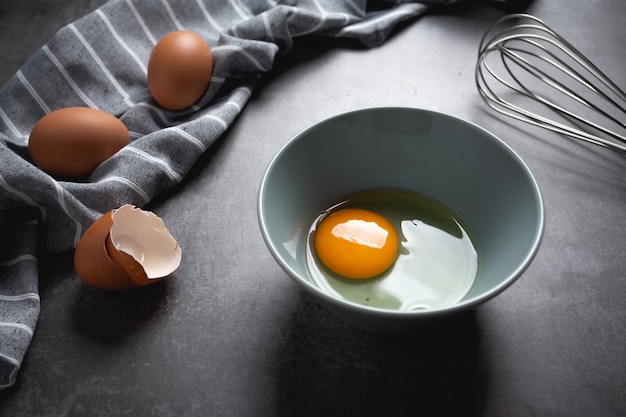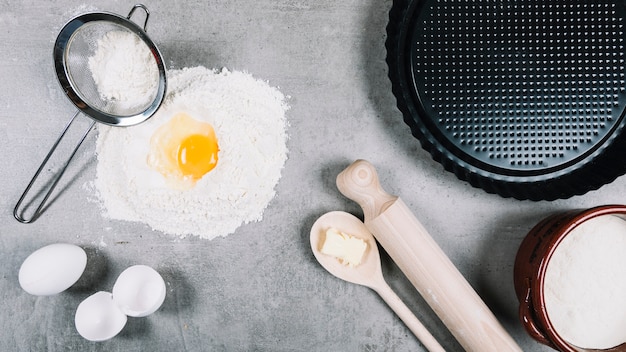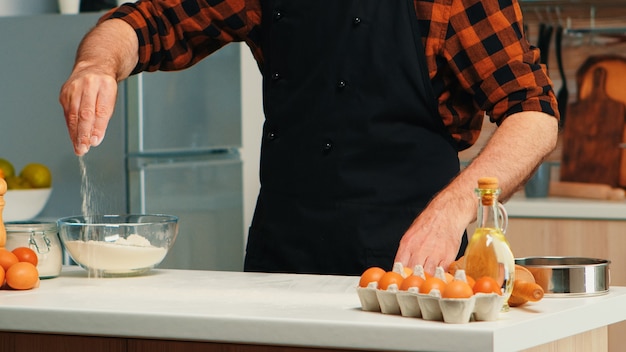As a seasoned foodie, I've always been fascinated by the seemingly simple act of boiling an egg. There's a certain magic in transforming a humble egg into a culinary masterpiece with varying textures – from the silky, runny yolk of a soft-boiled egg to the firm, bouncy white of a hard-boiled egg. But getting the timing right can be tricky! Over the years, I've learned a few tricks and developed a foolproof system for achieving the perfect boiled egg every time. So, grab a saucepan and join me on this egg-cellent adventure as we explore the secrets of boiling eggs to perfection.
Part 1: The Basics – Setting the Stage for Success

Before we dive into the world of timing, let's start with the essentials. The quality of your eggs plays a significant role in the final outcome. I always recommend using fresh, high-quality eggs – ideally free-range. These eggs have a richer flavour and a firmer yolk, which makes a noticeable difference in the texture of your boiled eggs. But if you're on a budget, regular eggs will work just fine. Don't worry, I'll help you get the most out of them!
Preparing Your Eggs for a Perfect Boil
A little prep goes a long way. First, gently wash the eggs under cold water to remove any dirt or debris. This step helps prevent cracking during the cooking process. Then, place the eggs in your saucepan and cover them with cold water, leaving about two inches of water above the eggs. This ensures even heat distribution and helps prevent the eggs from sticking to the bottom of the pan.
The Boiling Point: The Moment of Truth
Now, the exciting part! Bring the water to a rolling boil over medium-high heat. Once the water is bubbling furiously, turn off the heat. This is crucial, as we don't want the eggs to continue cooking at a high temperature, which can lead to rubbery whites and a greenish tinge around the yolk. Now, cover the saucepan with a lid and let the eggs sit in the hot water. This is where the magic happens, and the timing becomes paramount.
Part 2: Timing is Everything – A Guide to Egg Perfection

The duration of the steaming bath determines the final texture of your boiled egg. A few minutes can make all the difference between a perfectly runny yolk and a firm, set yolk. Don't worry, I've got a handy chart to guide you through the timing process for different textures.
Cooking Times for Different egg textures
| Texture | Cooking Time |
|---|---|
| Soft Boiled (Runny Yolk) | 3-4 minutes |
| Medium Boiled (Slightly Runny Yolk) | 5-6 minutes |
| Hard Boiled (Set Yolk) | 7-8 minutes |
| Very Hard Boiled (Firm Yolk) | 9-10 minutes |
Remember, these are just guidelines, and your preferred texture might vary. If you're unsure, it's always better to err on the side of undercooking. You can always pop the egg back into the hot water for a few more seconds if you want a firmer yolk.
Part 3: The Art of the soft boiled egg – A Culinary Delicacy

The soft boiled egg is a breakfast icon for a reason – it's a true culinary delight. The runny yolk, the creamy texture – it's a symphony of taste and texture. But achieving that perfect balance can be a bit tricky. Don't worry, with a few tips and tricks, you'll be a soft boiled egg master in no time!
The Delicate Timing Game
The key to a perfect soft boiled egg is precise timing. You want the egg white to be cooked through, but the yolk to remain gloriously runny. This typically takes about 3-4 minutes, but keep in mind that the size of your eggs and the heat of your stove can affect the cooking time. I usually start with 3 minutes, then carefully crack open one of the eggs to check the texture. If it's not runny enough, I gently place the egg back in the hot water for another 30 seconds or so until I achieve the desired consistency.
The Science of Perfect Peeling – A Gentle Touch
Peeling a soft boiled egg is an art form. You want to remove the shell in one piece, without damaging the delicate yolk. To make this easier, I recommend shocking the eggs in ice water immediately after cooking. This helps to loosen the shell and makes peeling a breeze. Gently tap the egg on a counter to crack the shell, then start peeling from the narrow end, working your way down carefully. With a little practice, you'll master this skill!
Part 4: The medium boiled egg – The Perfect Compromise
For those who prefer a balance between runny and firm, the medium boiled egg is the perfect choice. It's a versatile egg, great for salads, sandwiches, or simply enjoyed on its own. The yolk is still slightly runny, but the white has a firmer texture, adding a satisfying bite.
The Timing Sweet Spot
To achieve this ideal texture, aim for a cooking time of 5-6 minutes. It's a little trickier to judge than the soft boiled egg, so I always check the texture after 5 minutes. If it's not quite runny enough, I pop it back in for another 30 seconds or so. Remember, practice makes perfect!
Peeling with Confidence – Less Delicate Than Soft Boiled
Peeling a medium boiled egg is generally easier than a soft boiled egg because the white is firmer, which makes the shell come off in larger pieces. However, shocking the eggs in ice water is still a good idea to make the peeling even smoother.
Part 5: The hard boiled egg – A Culinary Classic
Now, let's talk about the classic hard boiled egg. This is the go-to option for deviled eggs, salads, or a quick and easy snack. The yolk is completely set, and the white is firm and rubbery, providing a satisfying chew.
The Perfect Hard-Boiled Cook
For the ultimate hard boiled egg, aim for a cooking time of 7-8 minutes. If you prefer a very firm yolk, you can cook it for a few minutes longer. However, be careful not to overcook it, as this can make the yolk dry and crumbly. You'll know it's ready when the yolk is firm to the touch.
Mastering the Art of Peeling – Tips and Tricks
hard boiled eggs can be notorious for their stubborn shells. The key is to shock the eggs in ice water immediately after cooking. This helps to loosen the shell and makes peeling much easier. You can also try rolling the eggs on a countertop to crack the shell before peeling. Sometimes, a gentle tap with the back of a spoon can help loosen the shell as well. Just be careful not to crush the egg!
Part 6: Beyond the Basics – Elevating Your Boiled Egg Game
So far, we've covered the fundamental techniques of boiling eggs, but there's a world of flavour and creativity to explore. Infusing your eggs with herbs and spices, or creating delicious dipping sauces, can elevate a simple boiled egg into a gourmet experience.
Infused Boiled Eggs – A Touch of Flavour
One of my favourite ways to enhance the flavour of boiled eggs is by adding herbs, spices, or even vegetables to the cooking water. A pinch of turmeric will give your eggs a vibrant yellow colour, while a sprig of rosemary or thyme will infuse them with a delicate flavour. Experiment with different combinations to find your favourites. Just remember to remove the herbs or spices before peeling the eggs.
Dipping Delights – Perfect Pairings for Your Boiled Eggs
A delicious dipping sauce can truly transform a boiled egg. Think beyond the standard salt and pepper! Experiment with creamy mayonnaise, tangy mustard, spicy sriracha, or even a homemade pesto. The possibilities are endless! Create your own dipping sauce combinations to perfectly complement your boiled eggs.
Part 7: The Science Behind the Perfect Boiled Egg – Unraveling the Mystery
Ever wondered why your hard-boiled eggs sometimes develop that greenish ring around the yolk? It's a chemical reaction that occurs when the iron in the yolk reacts with the hydrogen sulphide in the white during prolonged cooking. This greenish ring is harmless and doesn't affect the flavour or safety of the egg, but it can be aesthetically unappealing.
Preventing the green ring – Tips for a Pristine Yolk
To prevent the green ring, simply avoid overcooking your eggs. Another helpful tip is to add a teaspoon of vinegar to the cooking water. The vinegar helps to lower the pH of the water, which makes it harder for the green ring to form. This trick works wonders for those who prefer a longer cooking time for a firmer yolk without the greenish discoloration.
Part 8: FAQs – Answering Your Boiled Egg Queries
Let's address some common questions about boiling eggs.
1. Can I boil eggs in advance?
Yes, you can definitely boil eggs in advance! Just make sure to cool them down in ice water as soon as they're cooked. This prevents further cooking and helps them maintain their texture. Then, store them in the refrigerator for up to a week. Boiled eggs are a great time-saving breakfast or snack option!
2. How do I know if an egg is fresh?
A simple test can help you determine the freshness of your eggs. Place an egg in a bowl of water. If it sinks to the bottom and lies flat, it's fresh. If it floats or tilts, it's older. This is because the air pocket inside the egg gets larger as it ages, making it less dense and causing it to float. fresh eggs are the best for boiling, as they tend to have firmer yolks and whites.
3. What if my eggs crack during cooking?
Don't worry if an egg cracks during the cooking process. It won't ruin the batch. Simply add a teaspoon of salt to the cooking water. The salt will help to solidify the egg white and prevent it from spilling out. This is a good tip to have in your back pocket for those days when you're feeling a little clumsy in the kitchen!
4. How do I store boiled eggs?
Once your boiled eggs have cooled, store them in the refrigerator for up to a week. Make sure to keep them in a container or wrapped in plastic to prevent them from drying out. This will help them stay fresh and ready to enjoy!
5. What are some creative ways to use boiled eggs?
Boiled eggs are incredibly versatile! They can be enjoyed as a simple breakfast snack, added to salads, sandwiches, or used in recipes like deviled eggs, egg salad, or even egg drop soup. Don't be afraid to get creative and experiment with different flavour combinations. The possibilities are endless!
Part 9: Conclusion – A Celebration of the Boiled Egg
Boiling eggs may seem like a basic culinary skill, but it's a technique that takes practice and a keen eye for detail. Mastering the art of boiling the perfect egg, from the silky soft-boiled to the firm hard-boiled, unlocks a world of possibilities. So, go ahead, experiment, and embrace the versatility of the humble boiled egg. With a little practice and a dash of creativity, you'll be creating delicious, perfectly cooked eggs in no time!
Everyone is watching

How to Cook Frozen Lobster Tails Perfectly: A Step-by-Step Guide
RecipesLobster. Just the word conjures up images of lavish meals, special occasions, and a taste of luxury. But let's...

Pigs in a Blanket Cooking Time: How Long to Bake for Perfect Results
RecipesAh, pigs in a blanket. Just the name conjures up images of those delightful little parcels of crispy pastry en...

Pork Fillet Cooking Time: How Long to Cook It Perfectly
RecipesPork fillet, or tenderloin as it's sometimes called, is a real favourite in our house. It's so versatile, and...

The Ultimate Guide to Cooking Delicious Frankfurters
RecipesLet's face it, we all love a good frankfurter. It's a classic, simple, and always satisfying. But let's be rea...

The Ultimate Guide to Tender, Juicy Pulled Pork
RecipesRight, let's talk pulled pork. It's one of those dishes that just screams "comfort food," doesn't it? I mean...
